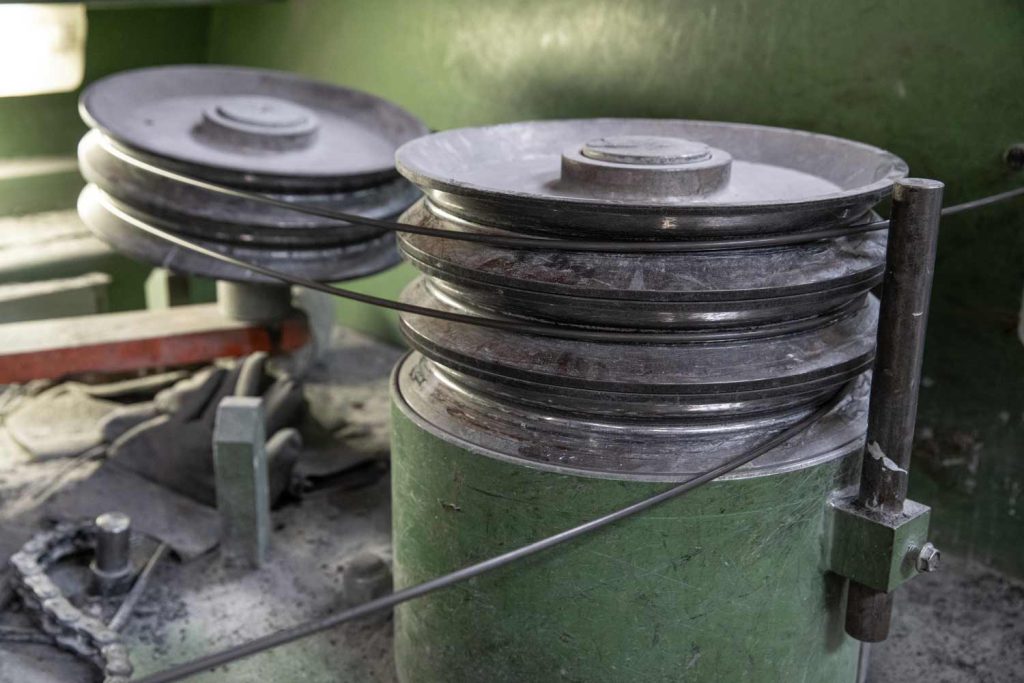Cold Stamping Steel
for Quenching And Tempering
Home » Products » Cold Stamping Steel » Quenched and tempered Steel
Steels with high mechanical characteristics
Quenched and tempered steels, with percentages of carbon that vary between 0.21% and 0.60%, have a chemical composition specially made to guarantee the best performance after the heat treatment, consisting of a hardening and a subsequent tempering.
These steels are suitable to withstand high loads, shocks, vibrations and above all to resist fatigue. They have the best compromise between mechanical resistance and toughness.
The complete range of quenched and tempered steels, diversified by chemical composition and therefore by hardenability, allows applications in practically every product sector, satisfying both the metallurgical and mechanical needs of all customers.

Delivery condition and surface
| Delivery Condition | Name | Wire rod | Steel wire |
| Cold drawn | +C | – | x |
| Cold Drawn and Annealed | +C+AC | – | x |
| Cold Drawn then Annealed and Skin passed | +C+AC+LC | – | x |
| Annealed | +AC | x | – |
| Annealed and Cold Drawn | +AC+C | – | x |
| Surface | Wire rod | Steel wire | |
| Bright Steel | – | x | |
| Stearated | – | x | |
| Phosphated | x | x | |
| Polymer | x | x | |
| Pickled | x | – | |
Technical data sheets updated to 01/04/2024
Quenched and tempered cold forming steel datasheet
| Ref. | Steel | Standard | EN Classification |
| 1.0406 | C25 | UNI EN ISO 683-1: 2018 | Steel |
| Ref. | Steel | Standard | EN Classification |
| 1.0501 | C35 | UNI EN ISO 683-1: 2018 | Non alloyed steel |
| Ref. | Steel | Standard | EN Classification |
| 1.0511 | C40 | UNI EN ISO 683-1: 2018 | Non alloyed steel |
| Ref. | Steel | Standard | EN Classification |
| 1.0528 | C30 | UNI EN ISO 683-1: 2018 | Steel |
| Ref. | Steel | Standard | EN Classification |
| 1.1133 | 20Mn5 | UNI EN 10269: 2013 | Non alloy special steel |
| Ref. | Steel | Standard | EN Classification |
| 1.1158 | C25E | UNI EN ISO 683-1: 2018 | Steel |
| Ref. | Steel | Standard | EN Classification |
| 1.1178 | C30E | UNI EN ISO 683-1: 2018 | Steel |
| Ref. | Steel | Standard | EN Classification |
| 1.1181 | C35E | UNI EN ISO 683-1: 2018 | Non alloy special steel |
| Ref. | Steel | Standard | EN Classification |
| 1.1186 | C40E | UNI EN ISO 683-1: 2018 | Alloy special steel |
| Ref. | Steel | Standard | EN Classification |
| 1.1191 | C45E | UNI EN 10269: 2013 | Non alloy special steel |
| Ref. | Steel | Standard | EN Classification |
| 1.1210 | C53E | UNI EN ISO 683-1: 2018 | Alloy special steel |
| Ref. | Steel | Standard | EN Classification |
| 1.5502 | 17B2 | UNI EN 10263-4: 2017 | Special alloy steel |
| Ref. | Steel | Standard | EN Classification |
| 1.5507 | 23MnB3 | UNI EN 10263-4: 2017 | Special alloy steel |
| Ref. | Steel | Standard | EN Classification |
| 1.5508 | 23B2 | UNI EN 10263-4: 2017 | Special alloy steel |
| Ref. | Steel | Standard | EN Classification |
| 1.5510 | 28B2 | UNI EN 10263-4: 2017 | Special alloy steel |
| Ref. | Steel | Standard | EN Classification |
| 1.5511 | 35B2 | UNI EN 10269: 2013 | Special alloy steel |
| Ref. | Steel | Standard | EN Classification |
| 1.5514 | 33B2 | UNI EN 10263-4: 2017 | Special alloy steel |
| Ref. | Steel | Standard | EN Classification |
| 1.5515 | 38B2 | UNI EN 10263-4: 2017 | Special alloy steel |
| Ref. | Steel | Standard | EN Classification |
| 1.5520 | 17MnB4 | UNI EN 10263-4: 2017 | Special alloy steel |
| Ref. | Steel | Standard | EN Classification |
| 1.5525 | 20MnB4 | UNI EN 10263-4: 2017 | Special alloy steel |
| Ref. | Steel | Standard | EN Classification |
| 1.5526 | 30MnB4 | UNI EN 10263-4: 2017 | Special alloy steel |
| Ref. | Steel | Standard | EN Classification |
| 1.5535 | 23MnB4 | UNI EN 10263-4: 2017 | Special alloy steel |
| Ref. | Steel | Standard | EN Classification |
| 1.5536 | 27MnB4 | UNI EN 10263-4: 2017 | Special alloy steel |
| Ref. | Steel | Standard | EN Classification |
| 1.7033 | 34Cr4 | UNI EN 10263-4: 2017 | Special alloy steel |
| Ref. | Steel | Standard | EN Classification |
| 1.7034 | 37Cr4 | UNI EN 10263-4: 2017 | Special alloy steel |
| Ref. | Steel | Standard | EN Classification |
| 1.7035 | 41CR4 | UNI EN 10263-4: 2017 | Special alloy steel |
| Ref. | Steel | Standard | EN Classification |
| 1.7202 | 37CrMo4 | UNI EN 10263-4: 2017 | Special alloy steel |
| Ref. | Steel | Standard | EN Classification |
| 1.7218 | 25CrMo4 | UNI EN 10269: 2013 | Special alloy steel |
| Ref. | Steel | Standard | EN Classification |
| 1.7220 | 34CrMo4 | UNI EN 10263-4: 2017 | Special alloy steel |
| Ref. | Steel | Standard | EN Classification |
| 1.7225 | 42CrMo4 | UNI EN 10263-4: 2017 | Special alloy steel |
